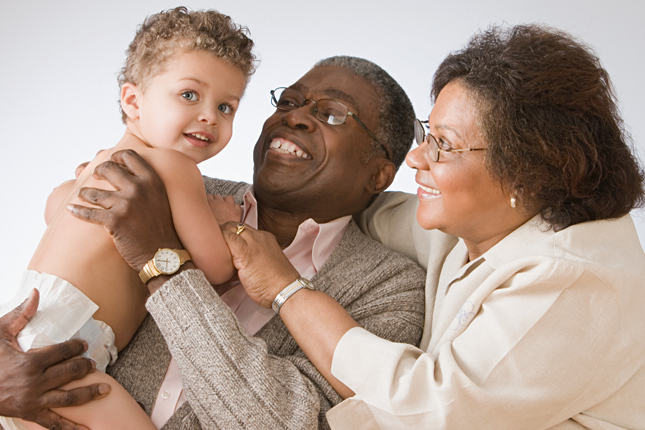Parent Savers
Creating Family Traditions
[00:00:00]
Please be advised, this transcription was performed from a company independent of New Mommy Media, LLC. As such, translation was required which may alter the accuracy of the transcription.
JOHNER RIEHL: Special celebrations and a warm family setting help foster self-esteem and creativity open up communication channels and more. Such cherished events can be as simple as a Sunday lunch or crocheted by the kids. All it takes is organization, imagination and the willingness to resist outside interference for a few precious moments. The best part is, “It’s never too early to start.”
Today we’re joined by Meg Cox, author of The Book of New Family Traditions. This is Parent Savers Episode 78.
[Theme Music/Intro]
JOHNER RIEHL: Welcome back everyone to another edition of Parent Savers broadcasting from the Birth Education Centre of San Diego. Parent Savers is your weekly online on-the-go support group for parents of newborns, infants and toddlers. I’m your host Johner Riehl. Thanks again to all of our loyal listeners who joined the Parent Savers Club.
Our members get bonus content after each new show plus special giveaways and discounts. Not only they can access our archived episodes but you can as well. If you want to look back at all of the episodes we’ve recorded over the past year plus those are all unlocked online. Go to Parent Savers, look at our episode guide. There’s tons of great content out there. Listen to it, share it, and love it.
Subscribe to our monthly Parent Savers newsletter for a chance to win a membership to our club each month. Another way for you to stay connected is by downloading our free Parent Savers app available on the android and iTunes marketplace.
So, I’m your host Johner. As you know, I have three boys – a six-year-old, a four-year-old and a two-year-old. Quinner, Whitaker and Zyler and we actually got some cool traditions I think that we’ve established. I’m really excited to talk to Meg about more about her book as well, Erin?
ERIN ESTEVES: Hi my name is Erin Estevez. I’m also known as OG Mama Sita and I have one little boy. He’s name is Cash and he’ll be two in about two weeks.
SUNNY GAULT: I’m Sunny. I’ve got two little boys at home. Sayer who is three-years-old, Urban who is about 18 months and I’m pregnant with identical twin girls. So, we’re still in some kind of the stage of trying to develop family traditions. I’m excited to learn what you guys have done and share what’s kind of work for us so far.
MARGARITA SALAZAR: I’m Margarita Salazar and I have twin boys. They are three and a half. So, I’m very excited to be here today.
ERIN ESTEVES: Another twin parent.
MARGARITA SALAZAR: We will bond.
ERIN ESTEVES: Yes.
JOHNER RIEHL: Meg, how about you?
MEG COX: Well, I’m a late bloomer so I have one child. He is – I’m experiencing the emptiness because he’s off to college and I haven’t seen him for a month. I’ll be seeing him next week. I’m also a stepmother of a grown-up who has her own child.
ERIN ESTEVES: Wow.
JOHNER RIEHL: Nice, thanks for joining us.
[Theme Music]
JOHNER RIEHL: Listener Jessica has a question for us that she e-mailed us. She wrote, “My son was born. It was five weeks ago. Our journey to have him was pretty rocky as we lost our first two babies. My pregnancy was understandably unbelievably stressful as I was sure we would lose him as well.
Looking back, I hardly enjoyed any of it and now I miss that experience. I love my son dearly and I fought for his survival for so long. However, now that he’s here. I find myself grieving my old life with my husband. I feel like my son deserves so much better. I’m constantly sure he is about to die. At the same time, I just desperately want my care-free life back. I’m five weeks out, is this normal or should I make a call?”
YVONNE ROTHERMEL: This Yvonne Rothermel Licensed Clinical Social Worker. Hi Jessica – first, I’m so sorry for your two previous loses and I’m sure your pregnancy was a lot with anxiety. How could it not be after what you went through? It’s very hard to enjoy subsequent pregnancy after loss especially, so many losses.
Unfortunately, women who lose their baby also lose that blissful [unclear] that many other pregnant women get to have. Once we go through so much to have a healthy baby as you have – when the baby is finally here and safe, women can have extremely high expectations for themselves as a parent.
Women who have been through these loses or have had been through a lot of infertility, tend to feel guilty for having any negative feelings about their baby or situation after the birth. Do you think I wanted this? I worked so hard. I shouldn’t be feeling this way. But the truth is, “Having a baby is all-consuming life-changing and challenging.” It’s normal for you to miss your old life and to wonder, “What did I get myself into?”
Women with a history of loss and infertility can be at higher risk for Postpartum Mood Disorders because of these high expectations – as well as the history of losses and grief. It’s also very common to have a lot of postpartum anxiety with the baby that arrives after the loss. When you have been through losses, your assumptive world gets violated.
We often talk about depression and grief, but anxiety is a big part of grief. When you have been – even what you’ve been through Jessica. I would recommend you talk to someone. It’s important that you’re getting support. There are treatments to help with postpartum anxiety.
Postpartum Support International is a good place to start. They will have local referrals in your area that specialize in the treatment of Postpartum Mood Disorders as well as supports for Parent Natal Loss. You can find them at www.postpartum.net.
It’s important that you find professionals who understand Paranatal Loss and its impact on anxiety and mood. Because losing a child is both a loss and a trauma and its understandable that you were being anxious. Once you get the right support in place, it can help you feel a lot better. You’ve been through a lot Jessica. Be gentle with yourself. Take good care of yourself and care enough about you to get the right supports in place.
[Theme Music]
JOHNER RIEHL: Today’s topic is creating family traditions and we’re joined by Meg Cox author of The Book of New Family Traditions. Thanks for joining us.
MEG COX: Thank you. I’m really excited to talk to you. This is my favourite topic.
JOHNER RIEHL: So, when we talk about family traditions, what does that mean to you and why it is so important?
MEG COX: Well, family traditions are everything from birthdays and holidays to boo-boos and bedtime. When you just have a certain way of kissing the boo-boo when your kids fall off the swing, that’s a little ritual or tradition that you have – and there are so important because they really create your sense of family. They are giving your kids a sense of identity. This is what people in this family do and how they celebrate and how they live. They also give them the sense of security.
Back to that boo-boo saying because they know that every time they fall down and get hurt, you’re going to swoop down and take care of things and kiss the boo-boo. They can keep taking those steps out of the scary and unknown world.
JOHNER RIEHL: You’ve been calling them boo-boos as kind of tradition right?
MEG COX: Yes, that’s right. They are traditional words. People have things. Part of the tradition is what you call it, absolutely.
JOHNER RIEHL: So, it doesn’t have to be a big formal event but rather just how you’re dealing with things.
MEG COX: Exactly, that’s one of the things – one of the biggest lessons I try to impart to new parents because I think when you start out having little ones here – we were all focused on the big stuff and how you were going to celebrate birthdays and all of that. The little daily things are so important to those new ones.
JOHNER RIEHL: So, how did you get started and how did this become your favourite topic?
MEG COX: Well, I spent 17 years old on-staff at the Wall Street Journal. I’m writing about very different things from agriculture to culture and I got pregnant at 40. I was looking around and trying to figure out what would make me a good mom and how could I learn about it. I sort of do my journalist thing.
I just see them as idea based on some amazing friends of mine who had grown-up with these wonderful traditions that if I could figure out family traditions by interviewing families that were great at it – and as well as religious educators, psychologists and whatever that I would sort of learn how to do this for myself and I could help other people at the same time.
JOHNER RIEHL: Erin was saying [unclear] because she – were you 40 when you were pregnant:
ERIN ESTEVES: Yup, that’s the OG in Mama Sita for officially geriatric.
MEG COX: It’s a wonderful thing, having a baby at any age. When you were sort of known where you are in life, I don’t know it’s just like it’s such a delicious extra there.
MARGARITA SALAZAR: Yup, my twins came – this is Margarita by the way. My twins came before my 30th birthday that I spent the latter part of 30’s trying to get pregnant and trying to work on just creating a family. So, it took me a while.
But, going back to the topic of traditions – it was interesting because as you were speaking when you’re talking about the boo-boos. I was remembering, just a simple little anecdotes in past couple of years with me – where I find myself thinking, “My God, I turned into my mother.”
ERIN ESTEVES: It happens.
MARGARITA SALAZAR: Yes, but it was a good thing. It wasn’t like a major like you’re saying earlier Johner – it’s not overwhelming like big event. It was just a little thing maybe somebody, maybe I called the spoon something that my mom likes to call it. Something kind of small like that – I can’t remember thinking out loud.
JOHNER RIEHL: You fed the food the same way.
MARGARITA SALAZAR: Yes, I learned that through my mom. Of course, I turned into my mother and in a good way.
SUNNY GAULT: I was about to say, “It wasn’t a bad thing.” So, I was very happy.
MARGARITA SALAZAR: Yes.
JOHNER RIEHL: What does it really take to make something tradition? When does something become a tradition versus just a funny thing happened at one time?
MEG COX: That’s a really good question. A lot of it has to do with intention and focus and meaning. You know, you brush your teeth every day. But, you don’t think about it, you don’t really invested in for sort of having a deep experience about you brushing your teeth. You’re probably thinking about something else. It doesn’t – it’s in part of a bigger meaning in your life; whereas a family tradition is something that comes out of your patience and your belief – and yet, it can be pretty small.
Part of it when I say that it comes out of intention, maybe you want to raise your kids to a love books and reading – so, part of your nap time ritual or your bedtime ritual is that you always read a story and then maybe you have a little song that you do. It’s just these little things that we add on.
I say in a book that, “Every once in a while, you sit on your porch and drink lemonade – that’s not a tradition. But, if you do it every Friday night and you have the same things and you call it our ‘welcome to week-end party’ then that’s a tradition.”
JOHNER RIEHL: Got it. Yes, there’s a difference between routine and tradition. I think you talk about there’s a routine and ritual?
MEG COX: That’s sort of brushing your teeth thing.
JOHNER RIEHL: Right!
MEG COX: It’s just being more intention and focus. One of the things when I’m talking to people about starting rituals is to think that, “It’s almost a theatre.” I talk in the book about how to create a ritual from scratch. But, it’s really like theatre. You need to do something that signals like that the curtain is going up.
So, it’s like opening hours starting a ritual and then you do the ritual and then you end the ritual – but, even when you think something as simple as saying a ‘Grace’ at the table. You know, you start by signalling what you’re going to say the Grace. Let’s hold hands, let’s pray or whatever going to be and then you say the prayer which is the ritual and then you say Amen. That’s like when the curtain is, “It’s done.”
So, it’s a bit of theatre. So, a part of that is – you know, those are little things that you do to like open the curtains. If it’s a musical cue, it could be a sound. It could be clapping your hands. It could be a bell. That lets people know that this is like not just ordinary time. It’s something special. It’s kind of heightening it. It’s like an exclamation point and all of that.
JOHNER RIEHL: In your research, did you look back at some of the earliest rituals or traditions that families have done?
MEG COX: Well, I’ve done some reading and I’ve heard this great book called the Rituals of Dinner. It even talks about cannibals. I think that if you look way, way back it’s really primal stuff and that’s one reason why we still do it today. It has to do with – I would think a handful of things and part of it is, “Its survival.”
So, things like praying and being grateful has to do with the fact that, “You survived another day and you had a meal.” You told the sabre-toothed tiger or whatever and then the natural cues. It’s like celebration Solstice because eventually somebody realized that after this day, you get more sunlight. That is what really worth celebrating.
JOHNER RIEHL: Yes, there are quite a lot of natural cues.
MEG COX: Yes, we still feel them and we still celebrate a lot of those things. Then of course a lot of that, that folding into Christian holidays and that sort of things – but it’s all there. I think we really just feel it in our bodies.
JOHNER RIEHL: All right, this is a good point. Let’s take a quick break. Then in the second half of our talk, we can talk about some specific traditions. I’ve got some stuff that we do that I think we should talk about. I want to hear from everyone else – their own as well as you Meg. So, we’ll be right back.
[Theme Music]
Welcome back everybody to Parent Savers. Today were talking about creating family traditions. So, many of our listeners have really, really young kids. Maybe they’re about to have babies or maybe they have newborns. What are some traditions that families can start even with as soon as babies are born?
MEG COX: Right, well – so many. I think that if you – well, do certain things at certain times of the day and that starts to give your – even a newborn overtime a sense of expectation of knowing when you sing that little song, they identified that with going down for or taking a bath, or a nap, or whatever it might be. So songs are great and other cues that each transitional thing is happening that’s really youthful – just fun rituals and traditions.
I know those people who do things like, “They take the picture of the baby sitting on the edge of the couch and then they take the same picture and the same position every Friday for the first year or something.” I mean that’s the kind of ritualistic or traditional things to do and it’s wonderful. But, there are so many possibilities.
JOHNER RIEHL: Here, let me jump out on that. One thing that we did, we didn’t mean to do it. It just happened. When Christina was pregnant, prior like a lot of other couples – we’re taking a picture of her every week so that we could see her grow.
Then, when Quinner was born – we’re supposed to take our picture because we build that as a family tradition before Quinner was born – the family being me and Christina at that point. Then as a crew, we took the picture and then we kind of missed it. So, the next week – we took another picture and then another. Now, Qunnier is six and we have two other kids. We take a family picture every week.
ERIN ESTEVES: That’s so cool.
MEG COX: I love that. I do, I love it – that’s great.
JOHNER RIEHL: That’s one of our family traditions. What’s also cool about it is the kids know how to say, “Cheese.” So, they either know how to avoid the camera or if the camera comes out they can like stop to give the two-second cheese. All right, am I done and then kind of move along.
SUNNY GAULT: So, what do you do with the photos afterwards? Have you ever compiled them?
JOHNER RIEHL: Yes, we saved them in and I print them out every couple of months. We have an album. We actually just filled our first album. So, we’re buying the second. It’s called the Real Family Volume 1 and then we’re filling up the Real Family.
ERIN ESTEVES: Real Family, it’s cute.
JOHNER RIEHL: Volume two. So, I think that’s kind of thing that we’re looking to continue at least until the kids were [unclear] like Meg. But, we will keep it going beyond that. Margarita, do you have any traditions that you could think of that you guys were doing?
MARGARITA SALAZAR: Yes, there are a couple of things that we’ve done – same thing with photographs. It’s such an easy thing to do especially with cameras being so ready.
JOHNER RIEHL: Yes, exactly.
MARGARITA SALAZAR: You get your iPhone or your other smart phone with the camera built-in. You can snap us a picture at almost any point. Every month pictures are great picture to take that’s always fun. Something that we really like to do – at least, when I say we – I mean, me and the kids but they like it because I say, “We like it.”
I take pictures of them in their car seats. Obviously, when the car stops – as soon as I buckled them in and I look back to see what they’re doing just because I can’t’ look back typically when I’m driving. So, I’m looking back – I just kind of want to see, absorbed the moment. Then, I’ll just snap a picture at every single time that I catch them it’s something way off-based. It’s just crazy – a finger in her ear, the food dribbling down. It’s not a post picture; it’s just a capture a moment kind of thing.
SUNNY GAULT: Candid.
MARGARITA SALAZAR: Yes, it’s a candid and it’s become like a funny thing for me because I like to e-mail them. It’s not just about me, it’s about sharing. You said, “You have the book.” Johner’s got a book that he’s filmed a lot of pictures.
JOHNER RIEHL: Right.
MARGARITA SALAZAR: So, I like to e-mail them. I’m not on Facebook anymore because it was just so difficult for me to keep track of everything and everybody. So, now I just start to send an e-mail because I’m sort of old-fashioned that way. It’s turned into people like, “Where is your e-mail? Where’s the next picture kind of thing?”
Exactly, I all text them and people will respond. I think it’s a little more personal to send like to one person. Sometimes, even though obviously, things are changed and people are busy – you did the best you can. But, yes – anything that you can do that involves family –other family that aren’t with you. I think that’s helpful.
MEG COX: You know it’s great to as the kids get older is to have some guideline built-in so you know the age. I love these people who one thing to do about first day of school picture. You don’t remember what year that was. So, now – I know a lot of people who like make a sign. It says, “What grade they are starting, who their teacher is – that kind of thing.” You have that as part of your picture forever.
JOHNER RIEHL: Yes, I wonder how Pinterest is changing traditions because I think the people are saying, “There are people who did that and getting all sorts of ideas and new pressures on moms as well.” Meg, back to you – what are some of your other favourite traditions you’ve heard families doing, or that you encouraged others to do?
MEG COX: Yes, there’s one that I put in the book and we weren’t doing it and then my son saw me talking about on TV and he said, “We have to do that.” That’s a family dinner conversation basket.
ERIN ESTEVES: That’s fantastic.
MEG COX: Yes, in the book I have like 50 starter questions but some of it is fun things like, “What something you can do better than your parents and another is – if there was a holiday named after you, how will people celebrate it?”
MARGARITA SALAZAR: Yes, that’s a great one.
JOHNER RIEHL: That’s awesome.
SUNNY GAULT: That’s fun.
ERIN ESTEVES: But how it is kind of a built-in, easy, every month kind of thing just to follow without any lot of effort if you really just kind of allow it to sort of happen because the schools will celebrate it. The stores, you can’t walk into Cosco, Wal-mart or Target and the store’s inundated with the seasonal stuff – so, even if you’re just shopping for groceries, packaging changes.
MEG COX: But it’s also fun to sort of two things – one is, “I have a lot of things in the book better a little bit off-the-beat in track like how do you celebrate Poetry month with your kids?” You know and you’re not going to see that at Cosco which is a great thing to do, it’s in April. There are so many great poems for kids. It’s just so much fun.
But the other is to make up for your own family holiday. That’s one of the things that are great about traditions for kids growing up in the family. Eventually, they’re going to find out that, “Nobody else in the world celebrates that.” It’s wonderful.
SUNNY GAULT: I love that.
MEG COX: So, do I.
JOHNER RIEHL: At first, maybe they go through of series of emotions as they discover.
MARGARITA SALAZAR: That is so funny.
JOHNER RIEHL: Yes, that’s cute. Maybe our family tradition, the tradition now with Cosco is wait, seriously – they already have their own Christmas stuff out?
MARGARITA SALAZAR: Yes, I know it’s a little bit disturbing.
JOHNER RIEHL: That’s the tradition against the, “I cannot believe it’s appropriate.”
ERIN ESTEVES: If I could just interrupt and jump in. I am really wondering about blending family traditions especially if the parents come from – for example two opposing religious foundations. How do you respectfully integrate those?
JOHNER RIEHL: Impose yours though?
ERIN ESTEVES: Indoctrinate
JOHNER RIEHL: Combine it.
MARGARITA SALAZAR: You just plan yours first.
MEG COX: Well, that is a fabulous question and it does come up a lot. There are a lot of people who are in that situation. You really have to start out having a parental conversation before you get the kids involved about priorities and what is really important to you – because there are people who are might be kind of culturally, a certain religion – and then there are others who are really devout and there’s those things are not really negotiable.
Presumably, you wouldn’t have married a stresses of family, if that was going to be a problem. But then, when you start to navigate them – even though if you both celebrated Christmas and maybe one of you to open the presents the night before and you have the next day, you have the dilemma.
ERIN ESTEVES: That’s the situation at our house.
JOHNER RIEHL: This is huge dilemma for us.
MEG COX: So, the choice is either – well, there are several choices. One is, “It’s more important to one parent to the other and you make that, you go with them. Another way to do it is, “You take turns.” One year you will open at Christmas Eve and the next year you know. Kids kind of like it to be the same every year.
JOHNER RIEHL: Right!
MEG COX: So, sometimes with families what they do is that they do it more than one way. There’s an example on the book of a family and then the worst complicates things were the father is re-married and the kids have like traditional thanksgiving with their mom. Then, a week later or on the week-end, they have a completely different thanksgiving celebration with the dad and step-mom where it’s like picnic thanksgiving or it’s like turkey dogs and smores.
JOHNER RIEHL: I think it’s important to be able to work together. One of the things that I like as much is Christina and I buttheads about how to do Christmas, we’re able to work really hard on figuring it out because we want to be something to be the same for our kids. At the end of the day, we’re team mates and we’re friends. So, we’re willing to work through it. So, we try really hard to not be able to work through it and hopefully parents even from different spots can still like in your example, wouldn’t have two thanksgivings – come up with ways to make it work for everybody.
MEG COX: Also, as certain of another alternative that I didn’t really mentioned but I think it’s also nice is, “You don’t do it either way. You come up with a new way.” That is this is the way this family is going to do it in. You know, but it’s just that it has to be a real – there has to have trust, the kind of relationship that you’re talking about and then there has to be a buy on that.
He has splits, do it different. We have a chance to do it in a different way and this is what feels right to us. Maybe parents were maybe either is you want to do a vegan thanksgiving. There’s so many different ways that you might differ. But, you got to sort of somehow get on the same page. Sometimes, that is the best way to do that is to start a new page and a new tradition.
JOHNER RIEHL: It all goes to that intention that we talked about in the first part and that families really want to have this intention because it is such – as you get older, these are the memories that you’re going to think about. When you think family, it’s the traditions that you’re going to think about.
MEG COX: Right and you want them to be happy ones.
JOHNER RIEHL: Right, I was really a little about – you talked about problem solving traditions – is that sort of the whole how you treat a boo-boo?
MEG COX: Yes, this is one of the things that I wish more parents, the new parents knew about is that, “Problem solving traditions speaks are like wizard powers.” You can head-off so many tantrums if you just do something to take their mind off it and do something that’s silly. There are a whole bunch of different descriptions of ways to do this in the book. But, one of them is, “Everybody is having a tantrum, how do you stop that?”
One family for example, you get goofy and he gets silly and you change – get their attention on something else. There’s a family that when people are asking out again, getting nasty. They have what they called – crazy dance party and they do, we’re all hear music. Now, we just take out of our phones but you do a countdown – 10, nine, eight, seven, six. When you get to one, you turn on the loud music and you all dance like maniacs. You’re laughing and you get passed it.
There’s just a million ways to do that; whether it’s having a silly song or story that you do in the super market to distract. That’s always the transitional issue or if there’s so many different ways to do that. Those things are tough – the problem solving where children needed during those rough stuffs there, the predictable rough stuffs. You know, this is always when a meltdown happens.
So, one of my favourites when you ask about my favourite tradition, there’s one in the book called, “Guess day.” This mom came up with this idea because she got sick of having to say, “No” to her kids all the time – like, “No, I can’t stop and play with you. I’m cooking dinner.” So, whenever there’s something that her girls want to do – they write it down on a slip of paper and then they put it in the Yes Jar. One Saturday a month is, “Yes Day” and they each get to pick things out on the Yes Jar to do.
JOHNER RIEHL: Do they just pick them blindly or that they read through and get the ones they wanted?
MEG COX: I think they read it. Do I want to go to zoo today? Wear my tutu. Whatever might be, I think they pick. This is what I feel like today.
JOHNER RIEHL: Nice, that’s awesome.
MARGARITA SALAZAR: When you were saying Meg about problem-solving traditions – I think it’s also, I’m thinking that something is a part of the book. Where you use the same on language or buzz words to address a particular type of behavior?
So, my kids, they’re only three and a half. They’ve learned, “It’s not okay.” They learned that at school. They are in a Special Ed class because they’re both autistic. So, they do a little thumbs down, not okay sort of thing. It’s super cute. So, that actually was never anything in my family’s dialogue until my children arrived. So, now everybody in the house uses it’s not okay and we all have adapted it.
MEG COX: It’s not okay, that’s really good. That’s very powerful.
MARGARITA SALAZAR: Yes, we’ve all adapt it. I think it’s good and it becomes now something not a joke but more of something that we all use. Actually, it’s very helpful.
MEG COX: That’s lovely. Yes, it spreads to the whole family which is good too. You know another problem solving which we all know about were bedtime rituals are problem-solving rituals. Drop off, day-care or school for a younger child, just having that little ritual where it’s saving up kisses for mommy or a special goodbye or whatever it might be, really helpful.
JOHNER RIEHL: Yes, that is helpful for sure.
MARGARITA SALAZAR: Yes, I think it goes to consistency. If I can add, there’s one particular ritual that I remember that Meg will soon be probably preview too. It’s the laundry home ritual. So, when your sons come to see you from college, there will always be laundry entail. It’s a new tradition.
JOHNER RIEHL: You’re still creating new family traditions, Meg.
MARGARITA SALAZAR: It will be problem solving, right Meg?
MEG COX: Yes.
ERIN ESTEVES: I find it really fascinating that you put things like problem solving in the ritual category because I will never have considered it as such. But, now – it just seems so blatant and before it was, “I didn’t even see it that way.”
JOHNER RIEHL: Right, when you think about this – you’re thinking, “Where do we put our forks on thanksgiving and that’s not the tradition at all.”
ERIN ESTEVES: Well, the tradition is, “When do we buy the turkey?” Right now, I’m just saying like the problem solving or the boo-boo issue and how we respond to situations. I think it’s just fabulous. I appreciate you putting it in that perspective for me.
MEG COX: Thank you! Well it is really huge and it really is. Once you start doing that, it really helps you because you can sort of go through your whole daily schedule and say – these are the times. You know immediately which are the ones.
JOHNER RIEHL: So, any more great tips do you have for new parents to help create traditions?
MEG COX: Well, just don’t be put off with that word, tradition.
JOHNER RIEHL: Yes.
MEG COX: Do have a good time and I think that my last bit of advice would be to, “Pat yourself on the back for not being perfect because the rituals, the traditions and then the ceremonies and celebrations that your kids are going to remember are the ones were something goes wrong.
If you forget to turn on the oven at thanksgiving or the dog ate the cake – calm down. You’ll never forget this day ever. You will not starve. You’ll figure something else out. So, keep a sense of humour and do not, just like the best thing you can model for your kids because we can get stressed about that evening.
MARGARITA SALAZAR: Yes, it’s true.
JOHNER RIEHL: All right. Well, thanks Meg. Why don’t you tell our listeners a little more information how they can go about getting your book or find more about you?
MEG COX: Yes, my website www.megcox.com has a lot of great information and links to it. There’s even a trailer there that this list of my other books and you can see a book trailer about the book of the New Family Traditions.
JOHNER RIEHL: Great, well thanks so much for joining us and thanks for everyone in the room for joining us and thanks for listening to all of our listeners as well. For more information about Family Traditions, more information about Meg or any of our panelists, visit the episode page on our website. We’re going to continue the conversation for members of our Parent Savers Club.
After the show, Meg’s going to tell us a little bit more about some surprisingly part of traditions that maybe we wish weren’t still popular but its still are around. So, make sure that’s going to be some interesting conversation for our Parent’s Club members.
[Theme Music]
AMY SORTER: Hello Parent Savers. I’m Amy Sorter ecopreneur and co-founder of www.EcoSavvyMoms.com where you can find information for your family on-going green, saving money and looking great doing it.
Today we’re going to talk about the importance of reducing your energy cost and saving money by following a few general rules. One of the biggest things I like to do is, “Monitor my AC usage.” Central air conditioning can be the biggest energy user. I know it accounts for up to 33% of your energy bill. What I like to do is, “Keep energy cost down by regularly changing or cleaning the unit’s filters and always setting it to 78 degrees between 11 AM and 6 PM.” Better yet, consider using ceiling or room fans instead of central AC to save up to 90% on your cooling cost. You’ll see a big change in your energy bill.
Now, important also too, to keep your kids involve in trapping the cold air in the house. Saving energy is keeping warm-air out and not letting the cool air escape? To do so, make sure your windows and doors are lined with weather stripping and don’t forget to remind your children to keep those doors while the AC is running.
Refrigerator can be another energy-user, gobbling up 20% of the energy your home uses. Help it run more efficiently by cleaning the coils, making sure the seals are nice and tight and maintain the right temperature setting. Another thing I’d like to do is, “Minimize my hot water usage.” To save energy wasted by that hot water heater, I usually set the device to approximately 120 degrees. I wash my clothes and the dishes in cold water instead of hot water. I’ve also installed low-flow shower heads in faucet aerators to help save water and other energy use.
Another important thing, dim the lights. Well, not literally – but I like to do is save energy cost all year round with energy-efficient lighting. CFL’s used 75% less energy and last up to 10 times longer than incandescent lighting. The last thing of course, is beware of energy vampires. I know vampires are all the rage these days but energy vampires aren’t. Some products like DVD players, office equipments, video games, phone chargers – those kinds of folks continue to drop power even when they’re turned off or in standby mode.
If an electronic device has a glowing red or green light, chances are it’s using phantom power. Depending on how many of these energy vampires you have around your house – this wasted energy can really add up. At expense of gadgets like energy used monitors, power-timers and smart strips can help produce phantom power and lower your energy use up to 15%.
For more information on how to reduce your energy cost and other parent-friendly eco-tips, visit www.EcoSavvyMoms.com or visit us on Facebook at Facebook.com/ecosavvymoms and don’t forget to make it a green day.
JOHNER RIEHL: That wraps up our show for today. We appreciate you all listening to Parent Savers. Don’t forget to check out our sister show – Preggie Pals for Expecting Parents. Our show The Boob Group for Moms who Breastfeed their Babies and our new show Twin Talks for Parents who either Expecting or have Twins.
Next week on Parent Savers, we’re going to be talking about teaching your kid multiple languages – the pros, the cons, some of the details about it. I know Erin has a lot of experience with that as well. It should be a great conversation. This is Parent Savers. Thanks for joining us. We are empowering new parents.
[Disclaimer]
This has been a New Mommy Media production. Information and material contained in this episode are presented for educational purposes only. Statements and opinions expressed in this episode are not necessarily those of New Mommy Media and should not be considered facts. Though information in which areas are related to be accurate, it is not intended to replace or substitute for professional, Medical or advisor care and should not be used for diagnosing or treating health care problem or disease or prescribing any medications. If you have questions or concerns regarding your physical or mental health or the health of your baby, please seek assistance from a qualified health care provider.
[00:33:47]
[End of Audio]











